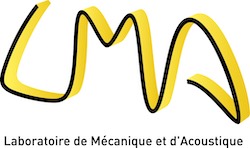We study and extend the work of Yu I Bobrovnitskii, “A new impedance-based approach to analysis and control of sound scattering” , JSV 297 (2006) pp 743-760, to provide a measurement approach for the prediction of a target’s scattered field when buried in any fluid-like media. The physics of the target, at the core of the theory, is completely defined by the structural admittance Ys (the structural Green’s function). When it is known it can be combined with surface impedances to predict the 3D bistatic scattering in the desired fluid-like media. Sandrine Rakotonarivo, et al demonstrated (JASA, 134 (6), (2013) pp 4401-4411) that Ys can be measured if the object is placed in an isotropic random noise field and that an accurate prediction of the far-field scattering can be obtained. The Ys construction consists of ensemble averages of cross-correlations of surface accelerometers and microphones made over the complete surface of the object. The measurement can be carried out in a simple (acoustically unaltered) laboratory room using remote loudspeakers to create the noise field. However, as the frequency of interest increases the measurement of the surface fields would require a large number of surface mounted accelerometers. Thus, instead of a surface measurements, we propose to use two conformal surfaces of microphones placed near the object, together with near-field acoustical holography (NAH) to project these measurements back down to the surface. This projection yields, quite accurately, the total pressure and velocity fields on the surface, as demonstrated by simulations. Each dual array will consist of 250 inexpensive MEMS microphones, and 3D printing technology will be used to construct the support structure and seats for them. Work supported by the Office of Naval Research.
E. Williams - Near-field Acoustical Holography and the New Impedance method for the prediction of target scattering in different media
Amphithéâtre François Canac, LMA
Le 16 mai 2017 de 11h00 à 12h00
Earl G. Williams
Senior scientist du Naval Research Laboratory Acoustics Division, Washington DC


